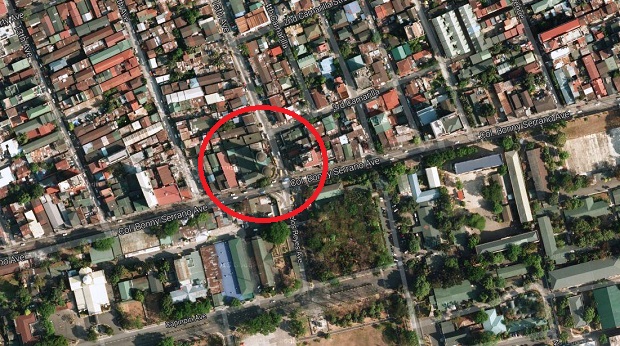MANILA, Philippines—Towering over a section of Cubao in Quezon City are two concrete water tanks built during the American colonial era which officials of Barangay Socorro are seeking to be declared a historical landmark in a bid to preserve the structures.
“The water tanks have been part of the history and landscape of the area that instead of saying, ‘Let’s go to the barangay hall’ people say, ‘Let’s go to the tanks,’” Barangay Councilor Ronald Espulgar said in an interview Saturday.
The barangay council passed a resolution which it submitted to the city council in July requesting to convert the twin water tanks into a historical site under Quezon City’s Heritage Development Program.
The resolution said doing so “would instil awareness and appreciation of our historical roots.”
Espulgar said the water tanks were built by the Americans before the war, probably in the 1930s, and had withstood earthquakes and the bombings during the 1989 coup attempt against President Cory Aquino. The water tanks are located just outside the gate of Camp Aguinaldo on Boni Serrano Avenue.
When the Americans left, the tanks and surrounding property were turned over to the National Waterworks and Sewerage System (Nawasa) which is now MWSS or Metropolitan Waterworks and Sewerage System.
Barangay Councilor Jaime Quiambao said that when Barangay Socorro was created in 1961, then former First Lady Imelda Marcos facilitated the accommodation of the barangay hall on the MWSS property. The area was then called Imelda’s Park.
The water tanks, which used to be the tallest structure and source of potable water in the Cubao area, became nonoperational in the late 1950s, Quiambao said.
One of the tanks actually has smaller dimensions as they were built about a year apart, Espulgar said. Presumably, the second tank was added to accommodate the growing population. The officials estimated the tanks to be 12 to 15 stories tall.
Much of what residents know about the water tanks is based only on oral history. The barangay council hopes that declaring the water tanks a historical landmark would lead to documented research.
Barangay officials are hoping that the water tanks compound—about 1,000 square meters in a prime location—would eventually be donated to the barangay.
Declaring the tanks a historical landmark would not necessarily transfer ownership, Espulgar said, citing a similar undertaking in the Balara Filters Park, a property also owned by MWSS and revived in 2003 after decades of neglect.
The barangay officials have converted the lower part of the right tower into an office for the watchmen on the first floor and Gender and Development office on the second floor. While the right tower houses the barangay primary health care clinic. At the back is a covered basketball court and in between is a daycare and the main barangay hall.
“We can’t win an award for our daycare because it’s flanked by hazards,” Quiambao said.
Espulgar said the tanks have been deteriorating and the facade is flaking off. Roofs were built around the compound as protection from the chips of concrete falling from time to time.
He said one of the tanks sustained two holes during the coup attempt but it has since been fixed.
In pursing heritage development, the barangay council aims to have the structures strengthened and refurbished, “with logo and lights on top and a historical marker at the grounds.”
